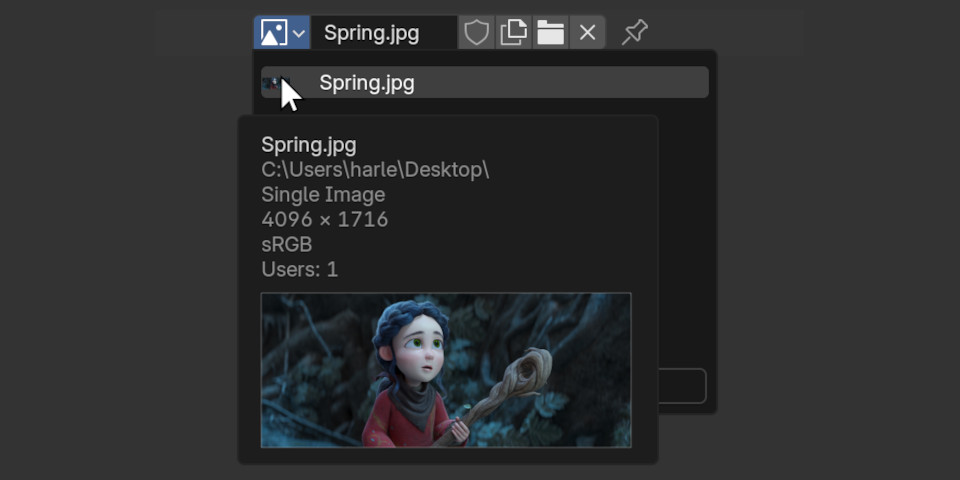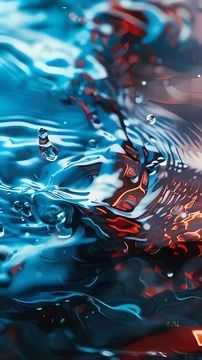5 key features in Blender 4.3

The splash screen artwork for Blender 4.3, created by Blender Studio.
The Blender Foundation has released the public beta of Blender 4.3, the latest version of the open-source 3D software for VFX, animation, game development and visualization.
Below, we’ve picked out five key changes, from Grease Pencil 3 – a major overhaul of Blender’s 2D animation toolset – to updates to sculpting, materials, and the Eevee and Cycles renderers.
At the end of the story, you can find a summary of what’s new in Blender’s other key toolsets, including 3D modeling, UV editing, character rigging and animation, and the built-in compositor.
We’ll update this story once the stable version of Blender 4.3 is released next month.
A recording of Blender Studio’s livestream showing the new Grease Pencil 3 toolset in Blender 4.3 in use to create the release’s splash screen artwork.
1. Grease Pencil 3: a major overhaul of the 2D animation toolset
The big new feature in Blender 4.3 is Grease Pencil 3, the long-awaited overhaul of Blender’s storyboarding and 2D animation toolset.
Originally due in Blender 4.0 last year, it’s a “complete rewrite” of the toolset, intended to lay “a solid foundation for the next 10+ years”, particularly to improve performance on large projects.
Although the focus of the initial release is simply to get the updated toolset to feature parity with Blender 4.2, there are a number of new features.
The most significant is that Grease Pencil is now compatible with Geometry Nodes, Blender’s procedural modeling, scene layout and simulation system.
That makes it possible to modify Grease Pencil objects with Geometry Nodes – “many” of the existing nodes that work with curves have been updated to work with Grease Pencil data.
You can get a sense of the new workflows that this opens up in our this story, which includes a demo of Geometry Nodes in use to convert a Grease Pencil animation to claymation-style 3D.
Other new features include color-codable Layer Groups, making it easier to manage large projects, a new Fill Gradient tool, and updates to the exiting drawing tools.
The changes aren’t backwards-compatible, and a few features have been deprecated, including drawing guides.

Light linking makes it possible to add rim lighting to a render of the monkey object (main image), without having the rim light affect the shadow on the wall behind (below right).
2. Eevee: light linking gives artistic control over lighting effects
Although Eevee, Blender’s real-time render engine, got a major overhaul in the previous release with the rollout of ‘Eevee Next‘, there are further updates in Blender 4.3.
The biggest is that Eevee now supports light linking, making it possible to set light sources to affect only specific objects in a scene, providing more artistic control over lighting effects.
Both conventional lights and emissive materials are supported, as is shadow linking, which makes it possible to choose which objects in the scene cast shadows created by the light.
The change brings Eevee in line with Cycles, Blender’s main production renderer, which got support for light linking in Blender 4.0.
Cycles supports a number of new volume scattering phase functions in Blender 4.3, including the Fournier-Forand function for mimicking haze in underwater environments.
3. Cycles: new volume rendering options for seas, skies and stars
Cycles itself gets support for a new phase functions in Blender’s Volume Scatter node, traditionally used to add effects like fog or smoke to a scene.
Each is geared towards a particular type of real-world scattering: the Fourier-Forand function mimics underwater haze, while Rayleigh scattering is used for skies and ocean surfaces.
Two are literally out of this world – the Double Henyey-Greenstein function is intended for planetary atmospheres, and Draine scattering is “mostly use for interstellar dust”.

The new Metallic BSDF shading node streamlines the process of recreating real-world metals.
4. Materials: new Metallic BSDF node makes it easier to recreate realistic metals
For material authoring, Blender’s Shader Editor gets a new Metallic BSDF node.
It’s intended to simplify the process of creating realistic metal materials, exposing existing but “hard to access” shading controls in a single dedicated node.
Two configurations are available: the F82 Tint Conductor Fresnel approximation used in the Principled BSDF node, and a true Conductor Fresnel configuration.
The latter – previously restricted to custom OSL scripts – provides “subtly more accurate” results, but is harder to use, and is currently only supported in Cycles, not Eevee.

Blender 4.3’s new brush asset shelf provides an dedicated place in the UI to select brushes.
5. Digital sculpting: new options for selecting and saving brushes
Blender 4.3 also changes workflow for managing brushes when sculpting or painting models.
Rather than being stored in the main .blend scene file, brushes are now stored in separate asset libraries, making it easier to reuse sets of brushes between projects, or share them within teams.
And rather than the toolbar, brushes can now be selected from a brush asset shelf, which appears across the foot of the 3D Viewport and Image Editor when working in Sculpt Mode.
Instead of being grouped by tool, brushes are now organized into ‘asset catalogs’, with users able to configure the shelf to show only the subset of catalogs needed for a particular project.
There are also some quite significant improvements to sculpting performance: brush evaluation is now “about 8 times faster” when sculpting a 6-million-face mesh.

Changes to the UI in Blender 4.3 include previews of images, movies and fonts in tooltips,
Other changes: what’s new in the other key toolsets?
The user interface gets a number of workflow improvements in Blender 4.3, including previews of images, movies and fonts in the tooltips that appear when hovering over assets.
The UI can also now be rendered using the experimental new Vulkan backend for the viewport.
It’s supported on Windows and Linux, on AMD, Intel and NVIDIA GPUs, but still has a number of limitations, and may currently be slower than the existing OpenGL backend.
New 3D modeling and UV editing features include a new Minimum Stretch mode for UV unwrapping, based on the SLIM algorithm: you can read about it in detail in this story.
For procedural modeling and scene layout, the Geometry Nodes toolset gets a number of new features, including a For Each Element zone to simplify complex workflows.
It is also now possible to add gizmos to node groups, making it possible to edit their inputs directly in the 3D Viewport, rather than having to switch to the Node Editor or modifier stack.
The character rigging and animation tools get smaller workflow improvements, including updates to motion paths, keyframing, and a new ‘bone eyedropper‘ system.
Cycles finally now supports hardware-accelerated ray tracing on AMD GPUs via HIP RT on Linux: something Windows users have been able to choose since Blender 3.6.
The Compositor gets support for multi-pass compositing when using Eevee.
The Video Sequencer gets performance and workflow improvements, including the option to connect and disconnect strips, and support for snapping in the preview area.
Pipeline integration changes include the option to export point clouds in USD format.
System requirements
Blender 4.3 is currently in beta. It is due for a stable release on 12 November 2024.
Blender is compatible with Windows 8.1+, macOS 11.2+ and glibc 2.28+ Linux.





